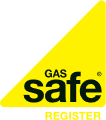Gas Safety in Flood Risk Areas
We’ve seen increasingly wild, wet and unpredictable weather in recent years, so if your home is in an area that is deemed at risk from flooding, it’s useful to know how to avoid damage to your gas appliances should such an emergency arise.
Before a flood
Because every building is different, it’s important to get advice from a Gas Safe registered engineer. They will be able to perform an assessment of the property, its gas appliances, pipework and the flooding risks that could occur and what to do to prevent an unsafe situation.
During a flood
If you’re advised to evacuate your property, then you’ll need to switch off the gas supply at the Emergency Control Valve, so long as it’s safe to do so. This is usually found next to the gas meter; if you can’t find it, contact the Gas Emergency Service Provider for your region.
You’ll also need to contact a competent electrician to make sure your property’s electrical supply and all electrical appliances are safely disconnected.
If your property is supplied with Liquefied Petroleum Gas (LPG), it’s important to note that flood waters can cause LPG bulk storage vessels and LPG gas cylinders to move or detach from installation pipework. If your LPG is supplied by cylinders and it is safe to do so you should turn off the valve at the top of each cylinder. Before any work is carried out, you’ll need to get in touch with your LPG supplier for advice relating to LPG cylinders.
After a flood
If your house has flooded, we understand that this can be an overwhelming and stressful experience. Here are the steps you need to take to stay safe and preserve, where possible, the integrity of your appliances until a registered gas engineer can assess any damage:
- Contact your gas supplier so they can advise you of the general situation in the area.
- Get in touch with a Gas Safe registered engineer before turning on the gas supply. They’ll make sure the installation pipework isn’t filled with water. If it is, this must be removed from the supply before the gas appliances can be re-checked, confirmed as safe, and used as normal.
- Don’t turn on a gas appliance’s electrical supply and use appropriate measures to isolate the electrical supply to the appliance before allowing electrical power to the property. Although a gas appliance may not have been submerged, as an example, it may have increased condensation that could lead to a fault.
- If you’re using pumps and generators to clear flood waters, be sure to follow the manufacturer’s instructions and make sure there’s enough ventilation to prevent potential carbon monoxide exposure from any exhaust gases.
When a Gas Safe registered engineer visits your property, remember to check their Gas Safe ID card to make sure they are competent to work on all your appliances.
Can an appliance be recommissioned if flooded?
Depending on the extent of any damage, it may be possible to recommission a gas appliance, such as boiler or gas fire, however this will depend on a variety of factors. A competent Gas Safe registered engineer should complete a full safety check of the boiler to identify any faults.
Any number of circuitry and mechanical parts can be replaced on a gas appliance, so your Gas Safe engineer will be able to advice on potential costs to repair or replace as necessary.
Useful links, authorities and resources
Featured Content
Home Gas Safety
Find the latest advice and guidance on how to stay safe at home.
Frequently Asked Questions
A list of FAQs on gas safety and the Register in general.
Carbon Monoxide Poisoning
Carbon monoxide or CO poisoning is one of the major risks of an unsafe gas appliance. But what is it and how can we guard against it? Find out more.


